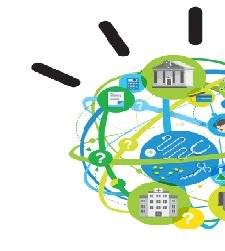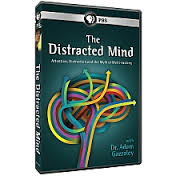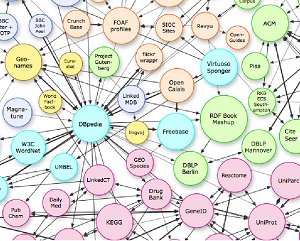
Arquivo para November, 2013
Software that helps scientific mining
Jaron Lanier wondered about consciousness and about the linguistic possibilities of computing  as a musician thought in music , but as a researcher can think of the possibilities of support for scientific research , as was done at Baylor College of Medicine in collaboration with IBM .
as a musician thought in music , but as a researcher can think of the possibilities of support for scientific research , as was done at Baylor College of Medicine in collaboration with IBM .
According to a report in MIT Technology Review website, a software that reads more than 60 000 jobs, can assist in data findings across these studies .
The software parses sentences in the documents, and could build a new understanding of the known enzymes are kinases that are important for cancer treatment .
By analyzing this enzyme , the software it produced a list of other proteins that although the literature mention probably are not discovered kinases , but based on what he already knew , can they be identified .
The software was made in IBM Almanden Colloquium : the cognitive enterprise , on the 19th of November.
Most of his predictions tested so far resulted correct , according to researchers, usually in research spending could reach $ 500 million and $ 1 billion to develop a new drug , and 90 percent of the drugs tested to will never market, says Ying Chen , IBM researcher .
Networks, yes we are talking about people
We did the two previous posts to do a quick analysis of what is , in my view, the most profound and consistent critic of the Internet and Web, Jaron Lanier , co -founder of Wired and author of “You are not gadget” (I start with the translation error em portuguese Welcome to the future : a humanistic vision the future of technology) .
the most profound and consistent critic of the Internet and Web, Jaron Lanier , co -founder of Wired and author of “You are not gadget” (I start with the translation error em portuguese Welcome to the future : a humanistic vision the future of technology) .
The center of criticism of Lanier can be found on page 92 , stating : “History attests that collectivist ideals can grow and become a large social scale ” , to then cite fascists and communists who began a small number of revolutionaries , ie , for it is what is happening with the digital world .
But networks have always existed in human history , and all the critics think that the network is a network tool on the Web (which is just a web application ) and not stop to think that networks are people , and that the global visibility through an electronic and digital , social media but this may have several tools : twitter , facebook and now Whatsapp is falling in love , at least the young.
Thus the network would be for him an oscillation between ciberfascistas and cibercomunistas , maybe both , but his real ideology appears to say that there is a ” ideology of violation ” referring to Wikipedia and open source , but slipped in authoritarian culture by stating : ” the multitude of free culture believes that human behavior can be modified only by involuntary means ” ( page 143 ) and then immediately shows its neoliberal belief ” they do not believe much in free agency or personhood , “where she was in the cultural industry ?
But leave your questions and more interesting questions for the end : “Is there a way to understand our story to explain what a word is and how one can know c’rebro a word ? (page 213 ) , ” there is a relationship between smell and language, this famous product of the human cerebral cortex ? ” and finally a key question ” in Chapter 2 , I argued that the following question may never be scientifically : the nature awareness ? “And states categorically : ” No experiment can demonstrate that consciousness exists “(p. 223 ) , that is the culture of objectivist author separating subject from object , almost to the point of denying (at least empirically ) the existence of consciousness , reply with two experiments which he himself proposes , the phrase :
The lngyagi ish onz coissa stranya . ( p. 218 )
Another is the experiment V. S. Ramachandran , a neuroscientist at the University of California at San Diego , called Experiment Rama, who is to decide what is kiki and yaws (page 224 ) using as a ” metaphor ” two figures , one spiny and one soft ( the words do not exist in most the known languages ) , is one of two figures puts thorns and other softer .
Would get better if he started the conversation poraí , needed to destroy the technology first and gives the impression of poor objectivity and subjectivity bad , and it’s tongue is what ?
Myths and ptifails about ” attention deficit “
It is common to associate the deficit of attention to the use of many devices , common now because of digital technology , most researchers have stated that it is a myth , but let the cognitive point of view what happens .
because of digital technology , most researchers have stated that it is a myth , but let the cognitive point of view what happens .
Physiologically, the brain receives new information by the thalamus , it is a filter of attention, if you are talking to someone in a noisy environment, it blocks coming from outside to keep the information coming from the conversation.
If we train it is possible to change the ” task” , for example , leave the TV and read a text, but very things that draw the attention of the thalamus and the filter does not work , can cause a “dispersion” or so-called attention deficit , and these cases are many in the modern world .
Nerve impulses transmitted to the processing center , which is the cortex, a kind of shell the kernels of the brain , is capable of identifying different stimuli by the senses , for example, you eat the palate is active and is also talking , both information will pass through the thalamus and cortex to different region , which corresponds to the hearing ( conversation) and taste ( taste).
After recognizing the stimulus , the cortex sends information to the hippocampus , is that he is the commander of memory, ie , select what is stored and discards what he thinks essential, but this depends on the encouragement you give, eg , my father’s speech is not important, then discard , just want to enjoy and then forget , then discard .
Ended up seeing a basketball game with some friends , the game goes to a place to save because you felt happy and had an incentive to save , but saw the people that are in the game , and did not pay attention (not reinforced stimulus) , then it goes to the place where you can forget, or ever forget the next moment .
While the hippocampus works , you will giving a “featured” emotional all the information it deems important , helping to highlight what should be labeled, so it gives more value to certain information that you tell the brain that is important.
So forgetfulness is bound to like , to be desired and also to train the brain to what is important , most of the information we make ” an obligation ” is discarded .
This information is sent to the region called the amygdala (not to be confused with the throat), which gives an “emotional warmth ” to information , highlighting what is most striking to us .
So what ” we want to keep it” can not be a moment of “attention deficit”, for example : environmental discomfort , tiredness or something nasty side
Informational nutrition
Like most people today eat badly information , confuse this phenomenon with the advent of the Internet and then the web application (is just an application on internet) .
the Internet and then the web application (is just an application on internet) .
The phenomenon of the information , as we highlight in another post , predates the internet and long before the Web , the question of the abundance of information was already studied in the 40s and an important aspect of this book is ” Information Anxiety ” Wurman .
But the appearance was worsened with technology , and Professor Larry Rosen of California State University and is a researcher of the ” psychology of technology” , states that the average attention span of many people now , is only 3 to 5 minutes then get distracted and fail to finish what they started .
Like an immense table all sorts of food in Brazil characteristic of self -service , but around the world can be thought of as a beautiful Christmas table , you should not eat everything and can get sick if you do this .
For information is the same thing, then we need to select what, how much and how we ” feed ” of information , and this is what I call “informational nutrition.”
According to Dr. Adam Gazzaley , who wrote The Distracted Mind the brain may seem limitless in its potential , or limitations such as processing speed , attention limits , limitations on work, sensitivity to interference . Both external , and internal .
Clarifies the book , there has been an explosion in the variety and diversity of electronic media . Portable devices can provide maximum information from a computer , he then asks the questions :
• Have you ever worked on a document while listening to a song and had to open an email ?
• Have you ever watched television while surfing the web and receiving text messages ?
The various media devices that children use both , may be even higher than adults , and this kind of behavior is not going away anytime soon.
But this can influence our cognitive capacity and performance of our brain , the book tells how to control these issues .
Characteristics of Generation Z
GenerationZ or Generation Millenium , are those born in the late 90s and early 2000´s, are the children of Generation X, people born in the late ’60s, they were sons of the silent generation ( of war ) and baby boomers ( baby boom after the war ) and generation Y , who are young parents of ” connected ” generation.
in the late ’60s, they were sons of the silent generation ( of war ) and baby boomers ( baby boom after the war ) and generation Y , who are young parents of ” connected ” generation.
This is the first generation that was born fully connected , since the Web was born in the 90s and saw the Millennials born, so it can be said that
it was “through migrant”.
Generation Z are known as digital native , I mean born on a planet already connected with use of the World Wide Web , file sharing , smartphones
and gadgets that make all connected all the time .
We found the other fast-moving world , but for them without it all gets a bit too tedious , they feel comfortable with television, radio, telephone, music and Web, another characteristic of this generation is the concept of the world, for they have no boundaries , it is now possible to travel, meet people and countries without a high cost .
.
The information will not be lacking , but begin to be selective too early, because they are focused on adapting to his time and like all other generations also like to break prejudices and concepts ( ie not specific to this generation , no! ) .
There are two paradoxical concepts of this generation , those who say they are ” dumbest generation” and those who say they are exceptional and fast in concepts. As I said in another post ( see my blog) I think the first misconception .
I think those who think the first hypothesis does not believe and has no hope of something new , a new arrival will depend youth .
Ends a time and get a hold
Today will be a new arrival , a new advent , where hopes and news should be cultivating and some optimism , even in a dark and difficult time, should always be remembered .
optimism , even in a dark and difficult time, should always be remembered .
In many countries this term has different meanings , for example , in Scandinavia (Finland , Sweden and Norway ) this is beginning November 13 , where the party is initiating Santa Luzia , although few religious countries , the date is maintained .
It may seem strange, but Luzia martyred in the third century of the Christian era , is also remembered in the Lutheran and Anglican Church , and was a much venerated saint in antiquity.
But the rest of Christmas traditions are similar , but there are processions with torches and Finland has a curious habit of visiting cemeteries and pay tribute to loved ones , it may seem strange but not for the Finns .
The fire in the fireplace with logs ( Yule log) and a drink called Jul ( Yule also ) has pagan origins in Norway , as well as the popular legend of Lapland , where he would live Santa Claus is a very cold northern region of Norway .
In 1900 King Haakon I decided that the pagan custom of drinking Jul ( yule ) should be changed to December 25 , in honor of the birth of Jesus Christ.
Gradually , the pagan feast was becoming more Christian . Jul name was preserved , but the holiday was dedicated to Jesus Christ. Christmas is thus a mixture of ancient pagan festival and more modern Christian traditions .
But everyone can and should expect something: a better time , more justice , less hunger and wars , and we can stop this holiday season and reflect a bit .
Web 3.0: coining words and give them meaning
Web is not just that I’m talking about, but also and especially of people, make sense, especially human, the things around us requires thought and act more and more just on impulse .
especially human, the things around us requires thought and act more and more just on impulse .
On this blog I spoke earlier of the word selfie, but I have already spoken of Instagram and ordinary people and everyday landscapes that go through our day to day “photographic”, so too is the case of Web 3.0, or fashion trend?
John Markoff was who coined the word Web 3.0 in the New York Times , Web 2.0 has already happened , it created hundreds or thousands of applications ( Apps of considering the cell ) and included the common user as producer of information , now photos , posts , comments and ” hashtags ” are there calling our attention , but these people should ALWAYS be seen and heard , they were not.
The problem of our day to day , and also that the Web is a reflection and not an idealization of the day – to-day as some think , is that much that ” lacks ” direction , and found thousands of photos to look at , words and videos means that we need them or them offering new significance .
John Markoff suggested simple questions such as: “I’m looking for a warm place to vacation and I have a budget of $3,000. Oh, and I have an 11 year-old child”, but actually thought of business , as own title and article suggest, by example Spivak company, Radar Networks, working on the holding of the content of social computing sites , which allow users to collaborate in gathering and adding their thoughts to a large amount of contents, travel movies.
But Web 3.0 now seems to be finding its way , projects like DBpedia and VIAF ( Virtual International authorit File) are indicating a more social than technical , although it may contribute to this, there is still a way in this ” construction ” .
Learn what is “selfie”
It was chosen as the word of the year on the internet, and means registering its presence in a scene with someone or simply a self-portrait.
presence in a scene with someone or simply a self-portrait.
They were once common in history, self-portraits , but selfie not only became popular , was recorded in the Oxford English dictionary , but within seconds the editors of the dictionary , the term routinely used by people worldwide , has evolved out of one narrow niche of social media for professional use , according to the dictionary , an increase of 17,000 % in 2013 .
The inclusion of the word selfie, in the online version of the Oxford English Dictionary came in August , but the paper version is still being evaluated .
Records neologism word 2013, called off the controversial choreography twerk , American singer Miley Cyrus , and also the binge -watch , which means spending a lot of time watching television.
Synthetic meat produced from biological tissue is another neologism , the Schmeat .
Registration in Oxford : selfie ( n.)na photograph that one has taken of oneself, typically one taken with a smartphone or webcam and uploaded to a social media.
Windows 8.1 is released free
As the Microsoft , the Windows version 8.1 RT is available for free download , although the site itself know that a small number of user Surface tablet (according to site 1 problem in 1000) have found a problem installing this device .
The previous version called Preview no longer be available after January says the site , but there are few changes from this version , and the interface impacts some users because it does not have major changes , an already experienced by users is the integration with SkyDrive , which is very good.
The library of documents , pictures , music and videos are not gone , just not apparent , but you can through the Navigation Panel to make it visible (see aside).
The famous ( and somewhat uncomfortable ) buttons in the sidebar on the right side , the five buttons , “Search ” , ” Share ” , ” Start” , “Devices ” and ” Settings.” Where the most important is the latter, which leads to a new sidebar with several sets of settings to change the behavior and appearance of the interface, but it is certain that most users will not move it.
The old Start button , now reappears in the lower left corner of the desktop , where it was since Windows 95, but does not call the old Start menu is just a shortcut to the home screen , the new interface called Metro .
.
But if you think getting nasty walking the mouse pointer until you find the exact corner where he opens the bar , you can open it directly with the shortcut “Windows C ” , but setting there is a way to open it , any triggering of a their functions buds combining with some Windows key with the character ” S ” to “Search ” , ” H ” to ” Share ” button to pure Windows ” Start” ( which leads to the Start screen ), “K” to “Devices ” and “I” to” Settings”, with some frequency of use, you will have to memorize.
More about Web 3.0
When Tim Berners – Lee , James Hendler and Ora Lassila inaugural paper published the Semantic Web : new form of Web content that is meaningful to computers will unleash a revolution of new possibilities , much of the subsequent development of the Semantic Web was designed : to express meanings , knowledge representation , ontologies , intelligent agents , and finally an “evolution of knowledge.”
Semantic Web : new form of Web content that is meaningful to computers will unleash a revolution of new possibilities , much of the subsequent development of the Semantic Web was designed : to express meanings , knowledge representation , ontologies , intelligent agents , and finally an “evolution of knowledge.”
The article pointed out the path of ontologies as a way “natural ” for the development and add meaning to information in the Semantic Web , methodologies coming from Artificial Intelligence , which in the eyes of James Hendler ( Web 3.0 ) that passed through a “winter ” creative .
But three integrated tools just indicating a new path : ontologies helped build schemes simple organization of knowledge called ( SKOS – Simple Knowledge Organization of System) , a database for consultation with a language called SPARQL and what was already basic Semantic Web , which was the RDF (Resource description Framework ) in its simple descriptive language : XML.
The Web for a set of tools already developed as Web 2.0 , making the consumer also a producer of contents and ” semantic links ” , it now web in which data can be linked and regardless of the tool, one can think and there are already projects with “open linked data”, a self structuring Web.
The first major project was the DBpedia , a database proposed by the Free University of Berlin and the University of Leipzig in collaboration with the project OpenLink Software in 2007 , which was structured around the Wikipedia , using 3.4 billion to form concepts 2:46 of RDF triples ( resource , property and value) or more simply subject-predicate – object , indicating a semantic relation .
Around these data were added one large number of data including : data Average (in Blue), Geographical (in yellow), publications (in green), the government (light blue), crossing domains (dark blue) and life sciences (red) .

